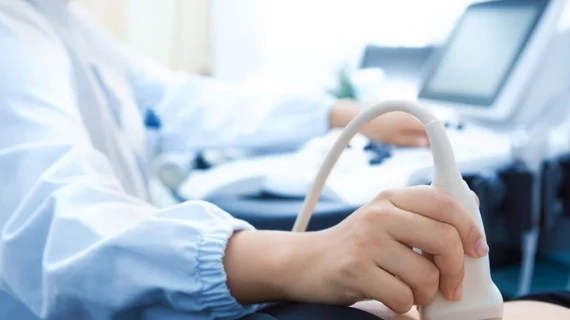Key factors associated with appendicitis misses on ultrasound and 1 possible fix
There are a few key factors associated with false or indeterminate ultrasound results for suspected appendicitis. One reporting approach, however, could help to alleviate them, experts reported in the European Journal of Radiology.
CT is the recommended first-line test for the most common surgical emergency, while US is the go-to for pediatric, pregnant and often patients presenting with urgent abdominal concerns. That’s the case at Queen Elizabeth II Health Sciences Center in Halifax, Nova Scotia, which recently evaluated such ultrasound scans and found a high number of indeterminate results.
Digging into the reasons, they found female patients and an absence of tenderness were associated with more unspecific or false findings. Utilizing multi-categorical reporting may be one way to address this issue.
“These categories are based on whether the appendix was visualized or not, and the presence or absence of secondary features of inflammation,” corresponding author Andreu Costa, MD, with Queen Elizabeth’s Department of Diagnostic Radiology, and colleagues wrote Oct. 4. “This approach provides a more granular estimate of the probability of appendicitis in the pediatric population and could potentially be applied to adults.”
For the study, scientists categorized 562 ultrasound examinations for suspected appendicitis (from a previous investigation) as true or false/indeterminate. Out of 541 studies that had images available retrospectively, Costa et al. separated reports into categories such as nonvisualized appendix with secondary findings absent or present; and appendix visualized and considered negative, equivocal or positive for this concern.
Ultrasound exams categorized as true had proportionally more males (23% vs. 14% in the false/indeterminate group), and patients with sonographic tenderness (56% vs. 27%). False/determinate results were almost 2 times more likely among females and 4 times more in the absence of tenderness. Other factors such as patient age, scan time and radiologist subspecialty did not impact ultrasound results. These findings align with previous studies, showing higher negative appendectomy rates among women and focal tenderness a predictor of this clinical concern.
“Similar to pediatric studies, the categorical approach to reporting US for suspected appendicitis conveyed more precise estimates of the incidence of appendicitis in our adult population,” the authors advised.

